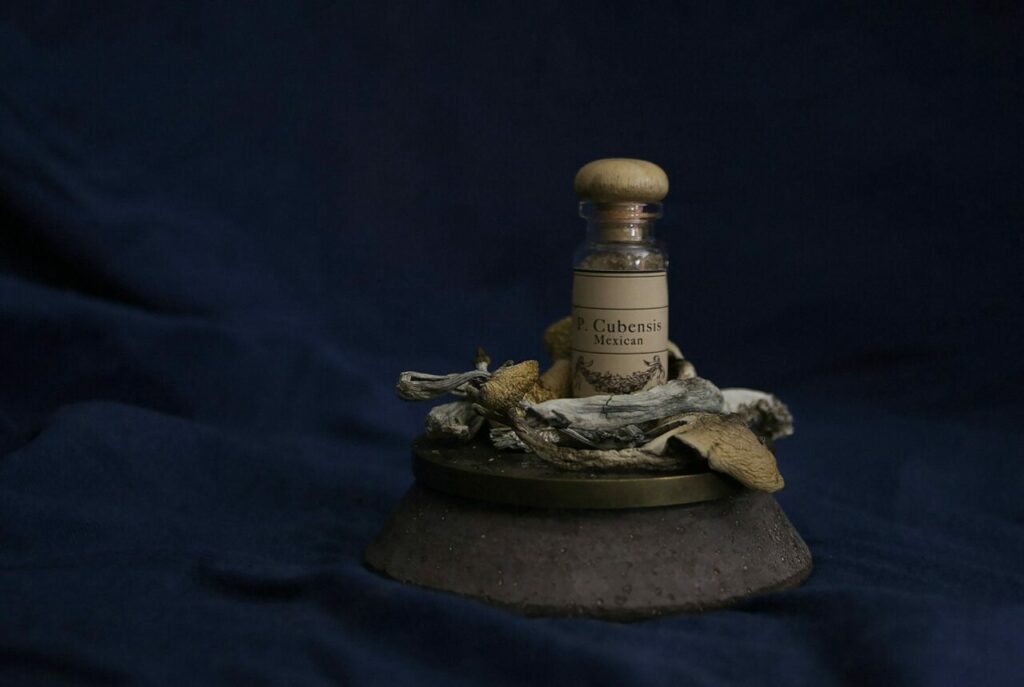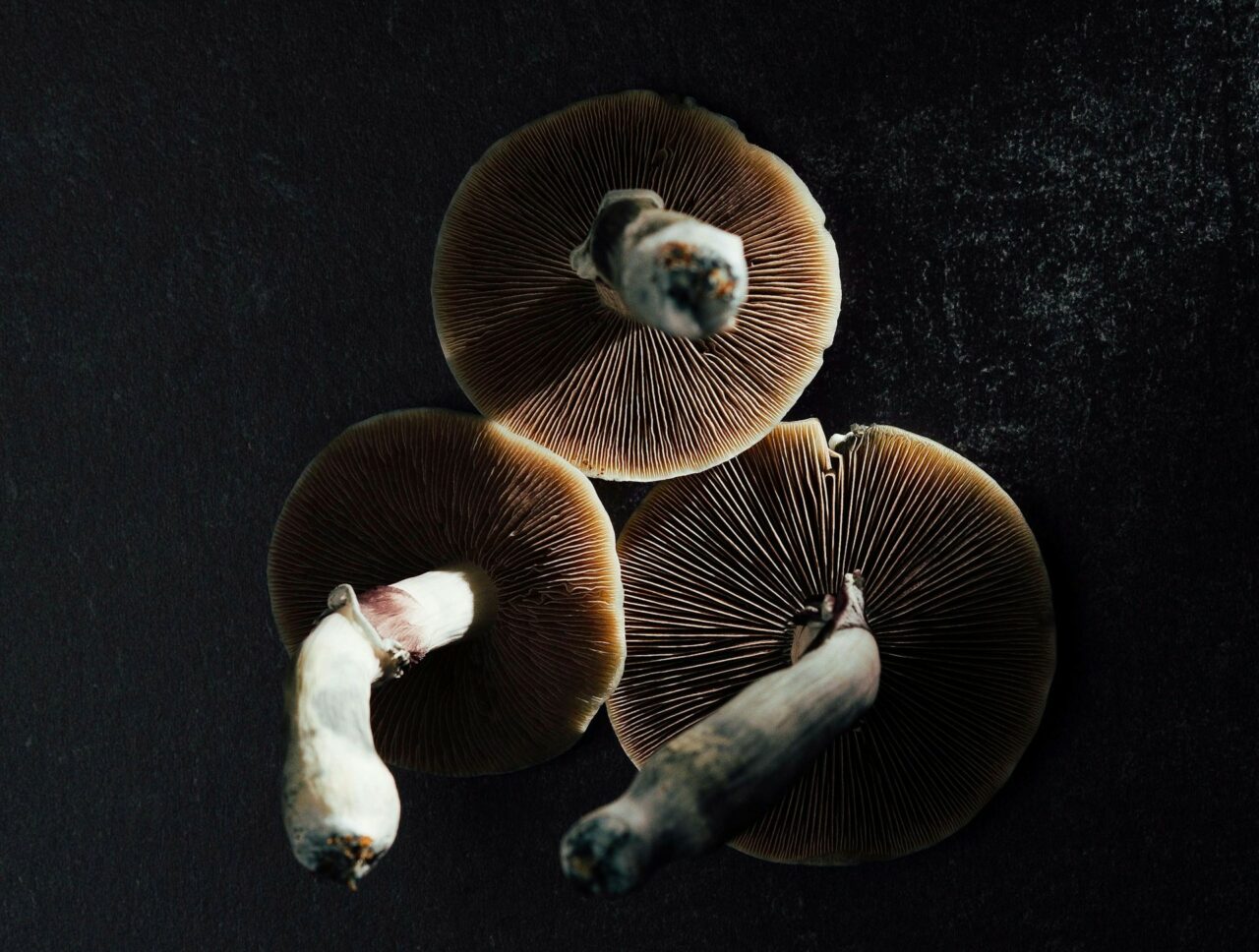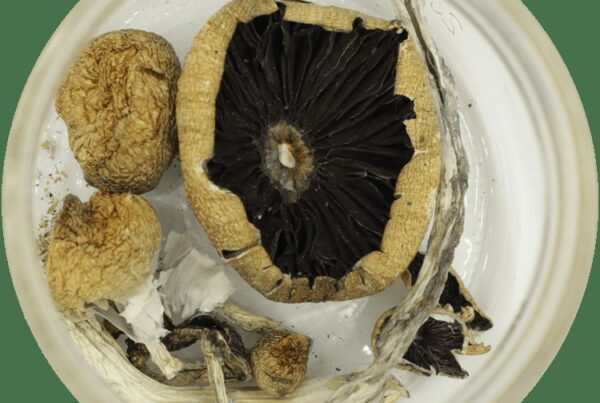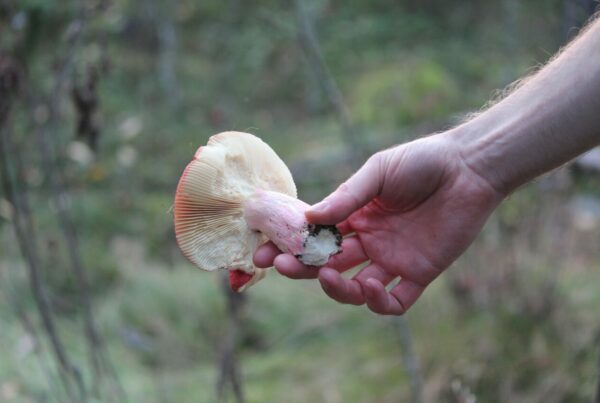The burgeoning interest in natural magic mushrooms in Canada has sparked comparable growth in the popularity of lab-created psilocybin products. The appeal of these products lies in their guaranteed dosage, although users may not realize that natural mushrooms can provide a more potent effect. Experts have underscored notable differences between the two, including disparate strength levels.

Key Takeaways:
- More than 180 species of natural mushrooms exhibit varying levels of potency, influenced by factors such as species type, consumption method, cultivation practices, and individual tolerance.
- Synthetic psilocybin, which is a lab-crafted version of the organic compound, is produced in controlled settings to ensure consistency and purity, primarily for use in mental health treatments.
- The combined effects of different compounds in psychedelic mushrooms, such as psilocin and baeocystin, can lead to a more potent and profound experience than that offered by any single compound independently.
Growing Market: Diverse Forms of Psychedelics
The demand for psilocybin mushrooms in Canada is accelerating, particularly in the treatment of certain mental health disorders such as OCD, depression, PTSD, and anxiety. In light of this growing interest, provincial governments have begun contemplating the decriminalization of recreational use.
In 2020, Canada authorized limited medical use of these mushrooms under specific conditions. Just a year ago, the federal government permitted certain terminally ill patients to use these substances to alleviate their symptoms.
This progressive stance has paved the way for the advent of synthetic psychedelics.
Ongoing Debate
The ongoing discourse about natural versus lab-engineered psychedelics revolves around safety, accessibility, and cost issues.
Supporters of natural psychedelics argue that these offer a more holistic and conventional experience. Conversely, advocates for lab-produced variants emphasize their ease of standardization for medical use, along with guaranteed dosage control and quality assurance.
While lab-manufactured psychoactive substances could enhance accessibility, worries about potential drug monopolization linger. Critics warn this could lead to diminished accessibility and increased expenses for users.
/wp:paragraph –>A Comprehensive Guide to Psilocybin
Psilocybe cubensis, a variant of magic mushroom, is one of several naturally occurring psychedelic substances accessible today. Magic mushrooms, recognized for their psychoactive properties, are available in numerous strains including Golden Teachers, Amazonian Cubensis, and Blue Meanies, with Psilocybe cubensis being the most widespread species.
Decoding the Psychedelic Experience
Psilocin, a compound derived from this mushroom, converts into a different chemical when metabolized by the liver. This newly formed compound interacts with the brain’s serotonin receptors, particularly the 5-HT2A receptor.
This receptor is crucial for mood regulation, cognitive functions, and perception. Its interaction with the new compound alters the standard operation of serotonin pathways, leading to changes in visual and auditory perception, thought processes, and emotional states. This results in elevated mood, enhanced creativity, introspection, and the so-called “psychedelic” experiences.
The Two Main Types
| Natural | Found in over 180 species of fungi, the potency varies depending on the mushroom species. Psilocybe cubensis is a widely recognized variety. The effects can vary based on consumption methods, cultivation techniques, and individual tolerance. |
| Synthetic | Manufactured in laboratories and chemically identical to natural compounds. They are produced in controlled conditions to ensure uniformity and purity. These are increasingly being studied for clinical uses, particularly in mental health treatments. |
Natural vs. Synthetic: The Fundamental Differences
Natural versions of these substances are found in specific species of magic mushrooms. Indigenous communities in North and South America have utilized these mushrooms in their rituals and ceremonies, deeming them sacred or divine.
- Derived from plants and mushrooms
- Employed in ancient rituals and healing practices
- The unique genetic makeup of each strain influences its potency
In contrast, laboratory-synthesized drugs are
A substance that closely mirrors the inherent chemical makeup of a particular compound is called a synthetic drug. These are precisely fabricated by professionals in regulated settings to maintain their authenticity. While their performance parallels that of natural drugs, they have the potential to alter the overall psychedelic experience.
- Produced by highly proficient pharmaceutical experts
- Emerging innovations purposed for medical use
- Consistent potency due to the governed manufacturing procedure
Natural substances provide enhanced benefits owing to their bioactive compounds. Various species of mushrooms can house different quantities of psilocybin and other compounds, resulting in a range of effects.
Findings from Scientific Studies
Research carried out at the Hebrew University revealed that psychedelic mushrooms exert a more potent and enduring influence on synaptic plasticity than their synthetic counterparts. The research team studied how the drug affected the brain activity of mice by observing changes in behavior and specific brain chemicals.
The study discovered that the extract reduced head twitches and promoted the growth of new brain connections. This suggests that the mushroom extract might provide more advantages than a solitary compound.
The scientists also introduced the notion of the “entourage effect”. They described it as the circumstance where the combined effect of multiple compounds in psychedelic mushrooms could be superior to the effects of individual compounds. Within the context of mushrooms, psilocin, baeocystin, and other tryptamines might synergistically produce a profound experience.
These supplementary chemicals are absent in lab-made substances, which could result in minor differences in effects, even when the psychedelic content is identical.
Specialists’ Opinions on Nature’s Superiority
Research consistently suggests that psilocybin—regardless of its form—yields promising results in treating various psychiatric disorders. A study undertaken in 2024 examined the effects of controlled substances on patients with treatment-resistant depression. It observed symptom alleviation following the administration of magic mushrooms.
When used in combination with other treatments, organic psychedelics might facilitate more profound emotional processing and insights during therapy sessions, thereby enhancing long-term results.
Scientists from the same university have noted that hallucinogenic mushrooms augment synaptic plasticity. They possess a distinctive metabolic profile that impacts oxidative stress and energy production pathways, unlike lab-generated psychedelics.
Market Consequences
The continually growing literature on this subject could shape how Canadians perceive and purchase psychedelics. Initial efforts by Health Canada, including the Special Access Program, are demonstrating potential to pave the path towards legalization and revolutionize the therapeutic landscape. Psilocybin-assisted therapy might soon evolve as a primary method of treatment.
Organic options are predicted to gain increasing importance in clinical trials and therapeutic environments. As the country progresses towards fully harnessing the benefits of organic psychedelics, notable progress in mental health therapies appears likely.
Guidelines for Safe Acquisition of Shrooms in Canada
- Section 56 Exemption: Health Canada recognizes that patients with severe medical conditions might resort to psilocybin as an alternative treatment. This exemption is part of the Controlled Drugs and Substances Act.
- Clinical Trials: Initial clinical trials have been authorized to investigate the drug’s potential in addressing mental health conditions. Participants need to meet specific requirements and pass a medical screening.
- Online Market: Psilocybin capsules or edibles can be procured from online sellers in Canada, but it’s crucial to buy only from reliable sources.
Explore the Strength of Natural Compounds
Nature is brimming with marvels, and shrooms are one of them. Rather than relying on synthetic psychedelics, consider the naturally potent magic mushrooms from Canada. They offer therapeutic benefits. Discover the best, naturally derived shroom strains at Shrooms Toronto Canada.
The shrooms we have for sale exceed the standard, maintaining their most genuine and purest composition in dried form. Make your purchase today and get your chosen items delivered to your doorstep discreetly and conveniently.
Frequently Asked Questions
What are baeocystin and norbaeocystin?
These are both tryptamine or indole alkaloids. They have a chemical resemblance to psilocybin. These tryptamine derivatives act as secondary alkaloids in shrooms, enhancing the overall psychedelic experience, though to a lesser extent. Baeocystin and Norbaeocystin have a similar chemical structure but differ in their psychoactive effects.
Are capsules and edibles composed of organic dried mushrooms?
The variation in experiences can be attributed to the source of the product. Online dispensaries offer products packed with organic substances, facilitating the full entourage effect. In contrast, synthetic compounds are commonly found in capsule form, which are frequently utilized in clinical settings and research trials.
Do natural psychedelics yield more profound experiences?
It’s worth noting that expecting a deep experience from a natural psychedelic could indeed facilitate such an experience. This is because our expectations, part of the ‘set’, can help shape the journey. Natural psychedelics are commonly linked with ceremonial traditions, and this ritualistic framework can lead to uniquely enriching experiences, distinctive from those experienced in clinical sessions involving synthetic compounds.





